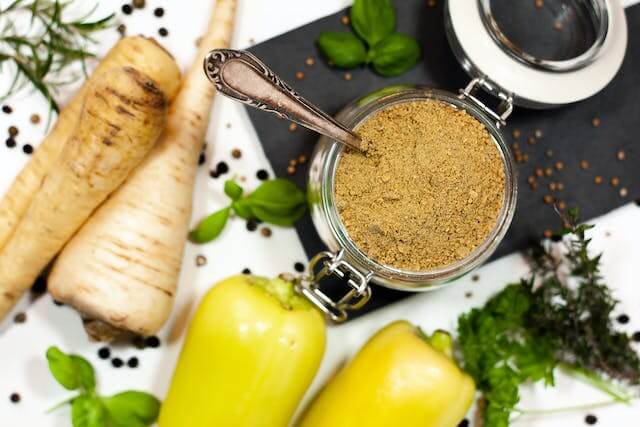As a result of urbanisation many fresh foods are replaced by processed foods with an extended shelf life. Sometimes this can alter the taste quality of food. Food flavours can help to keep food delightful, with a purely authentic taste and without any off-taste.
Whenever we think about food, we think about its flavour. Flavour is an important factor when choosing food from a menu. Appearance is also important but if it’s taste is not good then we feel disappointed.
There is a huge demand for products with less fat, less sugar, less salt, more fibre, or more protein. Adding more or less of such ingredients in a recipe has an impact on our sensory perceptions this is where food flavours can help. In this article, I will walk you through a important aspects of food flavours.
What are food flavours?
Flavor is a combination of taste and odor it is influenced by sensations of heat, cold, pain, and other sensations. In the food industry flavor plays an important role in determining the acceptability of foods. Food flavour intensity may change during storage time.
Flavor is generated by taste and odor-producing components. Analysis of aroma compounds plays a key role in determining the flavor of a food product. Aroma compounds are volatile, and present in wine, spices, food, and essential oils. Foods like fruits and vegetables develop flavor after biochemical reactions like ripening.

What are natural flavours in food?
Natural flavors include natural compounds such as amino acids and peptides which contribute to savoriness (umami) and richness (kokumi). Other compounds include organic acids such as lactic and citrus acids, as well as inosinic acid, guanylic acid, and other nucleic acid-like substances. Aroma compounds in natural flavors bring out the taste present in raw ingredients. Natural food flavours are more in demand by people interested in health & safety.

Classification of food flavours
Natural food flavours: Natural flavouring agents in foods are compounds of mainly aromatic organic compounds present as volatile essential oils or as non-volatile constituents ex. resins and oleoresins. They are formed in the plant during normal plant metabolism and remain as such until the plant is harvested.
Artificial food flavours: The flavor that is lost during processing and cooking can be restored using one of the following techniques.
Including natural extracts and flavorings: Fruit natural essences, spice-extracted essential oils.
Incorporating artificial flavors that are a mixture of chemicals and have the same aroma as the original ingredients For instance, vanillin is a synthetic flavor that replaces vanilla.

Aaroma compounds affecting the food flavour can be classified as:
- Alcohols – ethyl maltol, menthol, benzyl alcohol
- Aldehydes – vanillin, acetaldehyde, cinnamaldehyde, benzaldehyde
- Amines – indole. Cadaverine, pyridine, trimethyl amine
- Esters – fructone, acetate, pentyl pentanoate, ethyl butanoate
- Ketones – octenone, acetyl pyrroline, acetyl tetra hydro pyridine
- Lactones
- Terpenes
Food flavours list
| Natural | Microbial | Synthetic | Enzymatic |
| Vanilla | Diacetyl | Allylpyrazine | Ester |
| Cinnnamic acid | Lactones | Methoxypyrazines | Terpenes |
| Limonene | Esters | 2-Iobutyl-3-mythoxypyrazine | Vanilla |
| Menthol | Alcohols | Acetyl-L-pyrazine | |
| Camphor | Methyl Ketones | 2- Acetoxy pyrazine | |
| Eucalyptol | Benzaldehydes | Aldehydes | |
| Eugenol | |||
| Cinnamaldehyde | |||
| Isoamyl acetate |
Why is flavour important in food?
The main role of flavors is to add taste to foods. Flavours have no nutritional properties. Food flavors come in both natural and artificial varieties. Artificial flavor is selected to provide a larger and more different variety of flavors. Natural flavors include natural derivatives such as fruits, spices, and vegetables. Even natural flavors are mixed with a minimum amount of synthetic flavours to achieve different flavor combinations.
In the Food and beverage industry, manufacturers have been using artificial flavors for years. They have provided important benefits. Those who have allergies can safely consume flavors they might otherwise not be able to enjoy. They have also made available products to people to enjoy a variety of food flavors even when they are out of season.
What is an essence flavour?
The aromatic water solutions that are collected during the juice concentration process are called essences. Essences add an aromatic flavor to food or drink that tastes like the original fruit without being sugary. Although their flavors are subtle, when combined, they can enhance and intensify the taste of juices. Essences are transparent, do not add a substantial number of calories, nor do they color or alter the appearance of products. Sugar is not present in food flavour essence.
What is the most commonly used flavour enhancer?
A flavour enhancer is a substance that is added to food to supplement or enhance its original taste. The most commonly used substances as flavour enhancers are monosodium L-glutamate (MSG), disodium 5′-inosinate (IMP), and disodium 5′-guanylate (GMP). Also as salt is not classed as a food additive, it is the most widely used flavour enhancer.
| E or INS number | Name | Source | Precautions |
| 620 E620 | Glutamic acid | Natural amino acid (building block of protein). Manufactured from molasses by the process of bacterial fermentation, present in vegetable protein, such as gluten, or soy protein. Glutamic acid is present in all proteins. | Children should avoid it. It can kill nerve cells, can cause diseases such as Huntington’s, Alzheimer’s and Parkinson’s. |
| 621 E621 | Monosodium Lglutamate (MSG) | MSG is sodium salt from glutamic acid (E620), which is a natural amino acid. Prepared from molasses by bacterial fermentation. | MSG can kill nerve cells and can cause diseases such as Huntington’s, Alzheimer’s and Parkinson’s. It is not recommended for Pregnant women, children, hypoglycaemic, elderly and those with heart disease are at high risk. |
| 622 E622 | Monopotassium L-glutamate | It is a Potassium salt from glutamic acid (E620), which is a natural amino acid. Manufactured from the same source as that for Glutamic acid.Use in less amount is and not salty, it is a low sodium salt substitute. | Can cause nausea, vomiting, diarrhoea, abdominal cramps; products are low sodium salt substitutes. Not for babies under 12 months old or for those people with impaired kidneys. |
| 623 E623 | Calcium di-Lglutamate | g block of protein. Commercially prepared from the same source as that for Glutamic acid. Salt substitute. | No adverse effects. Calcium glutamate may have possible issues for asthmatics and aspirin sensitive people. |
| 624 E624 | Monoammonium L-glutamate | ||
| 625 E625 | Magnesium di-Lglutamate | ||
| E626 | Guanylic acid | Guanylic acid,a natural acid part of RNA, one of the genetic carrier molecules in the cell. | Avoided by people suffering from gout |
| 627 E627 | Disodium guanylate | Disodium guanylate is isolated from sardines or yeast extract; It is found in food products like instant noodles, potato chips and snacks, savoury rice, tinned vegetables, cured meats, packet soup. | For infants and young children it is not allowed. Also persons with gout, hyperactivity, asthmatics and aspirin sensitivity should avoid it. |
| E630 | Inosinic acid | A natural acid that is mainly present in animals. Prepared from meat or fish (sardines). Also produced by bacterial fermentation of sugars. Used by athletes to supposedly increase the oxygen capacity of their blood. | |
| 631 E631 | Disodium inosinate | May be prepared from meat or sardines; It is found in instant noodles, potato chips and snacks, savory rice, tinned vegetables, cured meats, and packet soup. | Disodium inosinate is not allowed in foods for infants and young children. Gout sufferers should avoid it. |
| E634 | Calcium 5′- ribonucleotides | Calcium 5′- ribonucleotides is a mixture of calcium salts of guanylic (E626) and inosinic acid (E630). Used in low sodium/salt products. | Guanylates and inosinates not used in products intended for children under 12 weeks. People suffering from asthma and gout should avoid guanylates and inosinates. |
| 636 E636 | Maltol | It is derived from the bark of larch trees, pine needles, chicory wood, oils and roasted malt; it can be produced synthetically. Artificial sweetener, flavour enhancer used in baked goods to give a ‘fresh baked’ taste and smell in bread and cakes, chocolate substitute, soft and fizzy drinks, ice cream, jam, etc. | If consumed in large quantities it can cause Alzheimer’s disease. Acceptable daily intake (ADI): Up to 2 mg/kg bodyweight. Many countries ban it for babies and young children |
| 637 | Ethyl maltol | It is derived from maltol chemically. It is base for essences, synthetic artificial flavour and flavour enhancer. | Some countries ban it for babies and young children. Acceptable daily intake (ADI): Up to 2 mg/kg bodyweigh |
| 640 E640 | Glycine (and its sodium salts), glycol, amino acetic acid | Flavour modifier. It is a natural amino acid, a building block of protein. | Can be mildly toxic if ingested. Glycine is produced mainly from gelatin, derived from animal bones. Therefore it is not suitable for vegans, vegetarians. |
Table source – Flavour enhancers for food industry
How many flavours does Indian food have?
Six basic Indian food flavors are sweet, sour, salty, bitter, pungent, and astringent. To bring out and enhance tastes, frying or toasting spices is a popular first step in Indian cooking. Among the traditional spices are cardamom, cinnamon, brown mustard seeds, coriander, cumin, and turmeric. While fresh herbs like cilantro, parsley, mint, basil, ginger, garlic, and chilies are widely available at your local, dried herbs play a significant role in Indian cooking.

Conclusion
I have tried to cover interesting facts about food flavours as we all know tastes are undoubtedly personal, whether you like salted caramel or your grandmother’s handmade aachar. Food Taste and flavor work together to create memories in us that other things are unable to. Gaining an understanding of flavor will only make it easier for us to enjoy food.